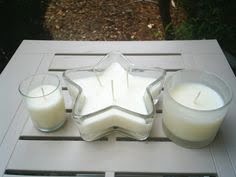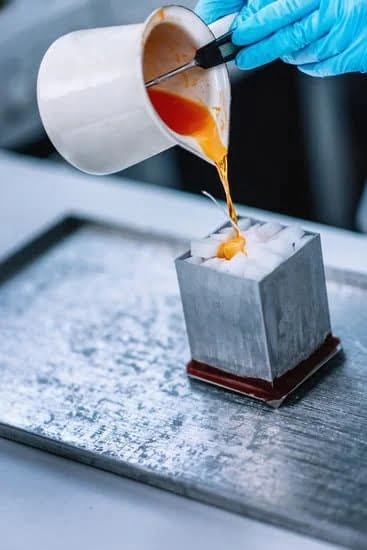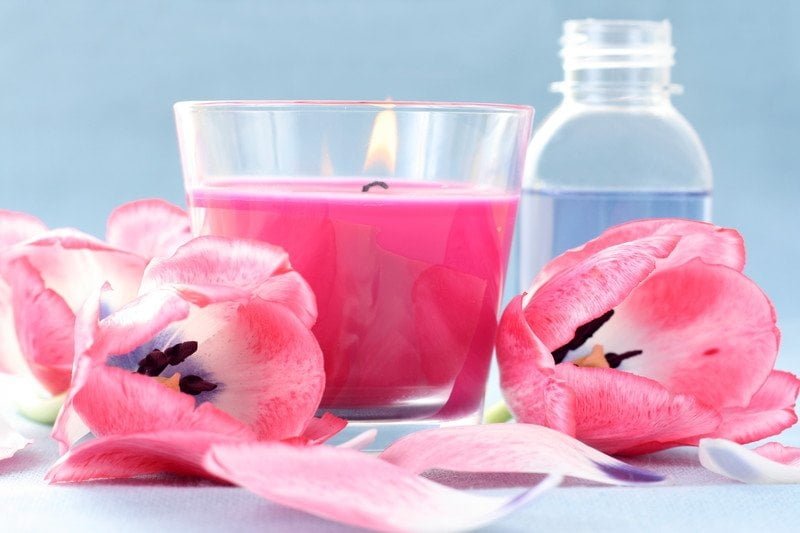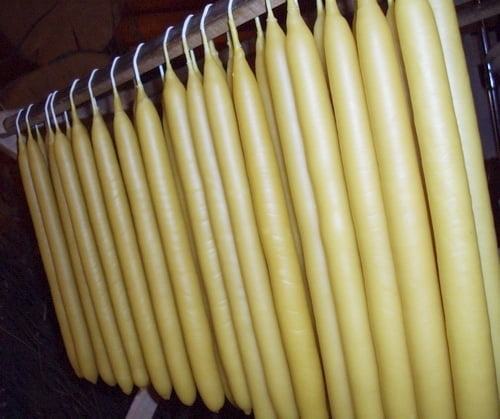The art of candle making is a creative and fulfilling hobby that allows individuals to express their personal style while enjoying the relaxing process of crafting handmade candles. Whether you’re a beginner looking to explore this craft for the first time or a seasoned enthusiast wanting to expand your skills, having the right candle making supplies is essential.
In this article, we will guide you through the various tools, materials, and techniques needed for beginners to embark on their candle making journey.
Candle making supplies for beginners play a crucial role in ensuring successful and safe results. From essential tools such as wax melters and thermometers to materials like candle molds, wicks, fragrance oils, and dyes, each item serves a purpose in producing high-quality candles. With the right supplies at your disposal, you can unleash your creativity and experiment with different wax types, choose unique fragrances, and create stunning designs.
Learning candle making as a hobby comes with numerous benefits beyond the joy of creating beautiful products. It provides an outlet for self-expression, promotes relaxation and mindfulness, and allows individuals to customize their living spaces with unique scents and styles. Furthermore, it can be a cost-effective alternative to purchasing store-bought candles while giving you the satisfaction of knowing that your creations are handmade with love.
In the following sections of this article, we will explore in detail the essential tools needed for beginners in candle making as well as delve into various types of wax options suitable for different preferences. We will also discuss selecting the right wicks for optimal burning performance and dive into choosing fragrances and dyes that elevate your candles’ visual appeal and aromas.
Additionally, we’ll cover safety precautions necessary when working with hot wax and equipment. Stay tuned to discover step-by-step techniques alongside tips on where to find reliable candle making supplies specifically curated for beginners wishing to embrace this fascinating art form.
Essential Candle Making Tools for Beginners
When starting out in the art of candle making, it is important to have the essential tools necessary to create your own beautiful and fragrant candles. Here are some must-have candle making supplies for beginners:
- Wax melter or double boiler: A wax melter or double boiler is essential for melting the wax evenly and safely. It helps to maintain a controlled temperature while preventing any direct contact with open flames.
- Thermometer: A thermometer is crucial for monitoring and maintaining the correct temperature of the wax. Different types of waxes require specific temperatures for optimal pouring and setting.
- Candle molds: Candle molds come in various shapes and sizes, allowing you to create different styles of candles. Beginners can start with basic mold shapes like pillars or votives before venturing into more intricate designs.
- Wicks and wick sustainers: The wick is what allows your candle to burn, so choosing the right wick size is important for proper burning and fragrance release. Wick sustainers help keep the wick in place during pouring and setting.
- Fragrance oils and dyes: Fragrance oils give your candles their delightful scent, while dyes add color and visual appeal. It’s best to use fragrance oils specifically designed for candle making, as they are formulated to withstand high temperatures.
- Pouring pitcher or containers: A pouring pitcher makes it easier to transfer melted wax into molds or containers without spilling. Alternatively, you can use heat-resistant containers specifically made for candle making.
- Heat-resistant gloves: Working with hot wax requires protection, so investing in a pair of heat-resistant gloves is essential. They will protect your hands from burns during the pouring process.
By having these essential candle making tools, beginners can create their own candles with ease and confidence. These supplies are readily available at craft stores, online retailers, and even in starter kits designed specifically for beginners. With the right tools in hand, you’ll be on your way to creating beautifully scented candles in no time.
Different Types of Candle Wax for Beginners
Candle wax is an essential component in candle making, as it determines the burn time, fragrance throw, and overall quality of the finished product. As a beginner candle maker, it’s important to be aware of the different types of candle wax available and their characteristics. Here are some popular types of candle wax that are commonly used by beginners:
Paraffin Wax
Paraffin wax is the most widely used type of candle wax due to its affordability and ease of use. It has excellent scent throw and provides a smooth finish to candles. However, it is derived from petroleum, which may not be ideal for those seeking more natural options.
Soy Wax
Soy wax is made from soybean oil, making it a renewable and eco-friendly choice for candle making. It burns cleaner and longer than paraffin wax and has a subtle creamy appearance. Soy wax also blends well with fragrance oils and has good scent throw.
Beeswax
Beeswax is a natural type of candle wax that is known for its sweet honey-like aroma when burned. It has a beautiful golden color and produces a warm, soft glow when lit. Beeswax candles tend to have a longer burn time compared to other waxes but can be more expensive.
Palm Wax
Palm wax is derived from palm oil and produces candles with a unique crystalline appearance. It has good scent throw and excellent burning qualities, including low soot production. However, it’s important to ensure that you source sustainable palm wax to support environmental conservation efforts.
Gel Wax
Gel wax is a transparent type of wax that allows for creative designs such as embedding objects or creating layered candles. It has good scent retention but requires specific techniques for proper pouring and curing. Gel wax should not be used for container candles, as it is not designed to withstand the heat.
As a beginner, it’s recommended to start with a wax that suits your preferences and budget. Each type of candle wax has its own unique characteristics and benefits, so feel free to experiment and find the one that best fits your needs. Before getting started, make sure to read the instructions and safety guidelines specific to the type of wax you choose, as they may have different melting points and handling requirements.
Choosing the Right Candle Wicks for Beginners
When it comes to candle making, choosing the right wicks is crucial for a successful and safe burn. The size and type of wick you use will determine how well your candle performs, including factors such as burn time, scent throw, and even flame height. In this section, we will discuss how to choose the right candle wicks for beginners.
One important consideration when it comes to wick selection is understanding different wick sizes and their implications. Wicks come in various sizes labeled by numbers or letters, such as 20/24 or LX12. These numbers indicate the thickness and burn rate of the wick. Generally, larger numbers mean thicker wicks that create larger flames and faster burns. It’s essential to match the size of the wick to the diameter of your candle container or mold.
Types of wicks suitable for different candle sizes also play a role in achieving optimal burn performance. Flat braided cotton core wicks are commonly used in candles because they provide a consistent and stable flame. They come in different thicknesses to accommodate various candle sizes. For smaller containers or tealight candles, you may opt for small, round braided cotton wicks with a paper core.
To ensure an even burn, it’s important to properly prime and trim your wicks. Priming involves coating the entire length of the wick in liquid wax before lighting it for the first time. This helps promote an even burn from the start. Trimming the wick before each use prevents excessive mushrooming and soot buildup while ensuring a controlled flame height.
| Container Diameter (in inches) | Recommended Wick Size |
|---|---|
| Less than 2 inches | Small round wick |
| 2 – 3 inches | Medium round wick |
| More than 3 inches | Large round wick |
Choosing the right candle wicks is a critical step in candle making. It ensures not only the proper functioning of your candles but also contributes to their aesthetic appeal and overall performance. Taking the time to understand different wick sizes, types, and the necessary steps for priming and trimming will set beginners on the path to creating beautiful and long-lasting candles.
Selecting Fragrances and Dyes for Beginners
When it comes to candle making, selecting the right fragrances and dyes can greatly enhance the overall experience and add a personalized touch to your creations. With a wide variety of options available, beginners may feel overwhelmed when it comes to choosing fragrances and dyes that will best suit their preferences and desired aesthetic. This section will provide some guidance on selecting fragrances and dyes for beginners.
Popular Fragrance Options for Beginners
One of the most exciting aspects of candle making is choosing the fragrance that will fill your space with a delightful scent. For beginners, it is important to start with popular fragrance options that are easy to work with and well-loved by many. Some common fragrance choices include lavender, vanilla, citrus, and clean cotton scents. These fragrances offer a versatile range that can appeal to different preferences and create a pleasant ambiance.
Understanding Fragrance Load and Scent Throw
When selecting fragrance oils for your candles, it is important to understand the concept of fragrance load and scent throw. The fragrance load refers to the percentage of fragrance oil used in relation to the total amount of wax in your candle. A general guideline for beginners is to use 6-8% fragrance load for optimal scent throw. However, this can vary depending on the strength or subtlety you desire.
Scent throw refers to how well the fragrance is dispersed into the surrounding area when the candle is burning. To achieve a good scent throw, proper wick selection and placement play crucial roles. Experimenting with various combinations of wicks and fragrances will help you determine what works best for your candles.
Using Liquid or Block Dyes for Desired Color Intensity
Adding color to your candles can further enhance their visual appeal. Beginners have options between using liquid or block dyes. Liquid dyes are easy to use as they can be mixed directly into the melted wax. They offer a wide range of colors and are great for beginners who want to experiment with different hues.
On the other hand, block dyes are often in solid or pellet form. They require melting before being added to the wax. Block dyes offer more intense color saturation, making them ideal for vibrant and bold colored candles. However, they may require additional steps for proper blending into the wax.
Remember to start with small amounts of fragrance oils and dyes when experimenting, as a little can go a long way. Gradually increase the amount until you achieve your desired scent and color intensity. Have fun exploring different combinations and finding fragrances and dyes that resonate with your personal style and preferences.
Exploring Candle Molds and Containers for Beginners
Candle molds and containers are essential for candle making, and beginners have a wide variety of options to choose from. When starting out, it is important to consider the shape and size of molds or containers as they play a significant role in the outcome of your candles. Additionally, different materials offer unique benefits and can enhance the overall look and functionality of your finished product.
For beginners, basic mold shapes such as cylinders, squares, or tapers are recommended. These shapes are relatively easy to work with and can create simple yet elegant candles. It is also important to consider the size of the mold or container in relation to the amount of wax you have. Using a mold that is too large for your wax can result in uneven burning or an underfilled candle.
There are also more creative options available for those who want to experiment with their candle designs. Unique container options such as mason jars, teacups, or even seashells can add a personal touch to your candles. However, it is crucial to ensure that these containers are heat-resistant and suitable for holding hot wax.
Factors to consider when choosing molds or containers include durability, ease of use, and compatibility with different types of wax. Silicone molds are popular among beginners due to their flexibility and easy release properties. Aluminum molds are durable but may require a releasing agent for easier removal of candles. Glass containers provide transparency and allow for more decorative elements to be added within the wax.
| Mold/Container Material | Features |
|---|---|
| Silicone molds | Flexible and easy release properties |
| Aluminum molds | Durable but may require a releasing agent for easier removal |
| Glass containers | Provide transparency and allow for decorative elements within wax |
Safety Precautions for Beginner Candle Makers
Safety should always be a top priority when it comes to candle making, especially for beginners. Working with hot wax and equipment requires caution and attention to detail to ensure a safe and enjoyable candle making experience. Here are some important safety precautions that beginner candle makers should always keep in mind:
- Proper ventilation and workspace setup: It is crucial to work in a well-ventilated area when making candles. This helps to prevent the build-up of potentially harmful fumes from the fragrance oils, dyes, and melted wax. Choose a room with good air circulation or consider using fans or open windows during the candle-making process. Additionally, make sure your workspace is clean and free from clutter to prevent accidents.
- Guidelines for handling hot wax and equipment: Hot wax can cause burns if not handled properly. Always use heat-resistant gloves or mitts when working with hot wax or pouring pitchers. Remember to never leave melting wax unattended on a heat source and avoid wearing loose clothing that may catch fire. It is also essential to follow the manufacturer’s instructions for any tools or equipment you use.
- Fire safety and how to extinguish candles safely: Candles should never be left burning unattended as they pose a fire hazard. Make sure to place your candles on heat-resistant surfaces away from flammable materials such as curtains or papers.
Keep candles out of reach of children and pets, and avoid placing them near drafts that could cause uneven burning or tipping over. Use a snuffer or long-handled lighter to extinguish candles instead of blowing them out, as blowing can cause hot wax to splatter.
By following these safety precautions, beginner candle makers can enjoy their hobby with peace of mind, knowing that they are taking the necessary steps to protect themselves and those around them. Remember, safety is key when it comes to any craft, and candle making is no exception.
Tips and Techniques for Beginners
Candle making is a creative and fulfilling hobby that allows individuals to express their artistic skills while creating beautiful homemade candles. For beginners, learning the tips and techniques of candle making can help them develop their skills and achieve optimal results. In this section, we will explore the step-by-step process of candle making to guide beginners in creating their own candles.
The first step in candle making is melting the wax. Beginners can use a wax melter or a double boiler to melt their choice of wax. It is important to monitor the temperature of the wax using a thermometer to ensure it reaches the recommended melting point. Once the wax has melted, fragrance oils and dyes can be added to create scented and colored candles.
Next, it is time to pour the melted wax into molds or containers. For beginners, it is recommended to use pre-made candle molds that come in various shapes and sizes. The molds should be prepared by securing the wick at the center before pouring the wax. Alternatively, beginners can also use containers such as jars or tins as their molds.
After pouring the wax, it is crucial to let it cool and harden properly. This process called curing ensures that the candle sets properly for optimal burning. Once the candles have cooled and hardened, they can be removed from the molds or used directly if poured into containers.
Trimming is another important step in candle making as it helps promote an even burn and prevents excessive soot production. Using heat-resistant gloves, beginners can trim their wicks to a suitable length before lighting them for use.
By following these step-by-step tips and techniques for candle making, beginners can successfully create their own homemade candles. It is important to remember that practice makes perfect, so experimentation with different fragrances, colors, and designs will help hone your skills as a candle maker. Get creative and enjoy the art of candle making.
Where to Find Candle Making Supplies for Beginners
One of the most exciting aspects of starting a new hobby is gathering all the necessary supplies. When it comes to candle making, having the right tools and materials is crucial for creating beautiful and fragrant candles. For beginners who are just dipping their toes into the world of candle making, it may seem overwhelming to find reliable sources for these supplies. However, there are several avenues where you can find everything you need to get started.
One option for finding candle making supplies is local craft stores and hobby shops. These establishments often carry a wide range of candle making materials, from waxes to molds to fragrance oils.
Visiting these stores not only allows you to see the products in person but also provides an opportunity to ask questions and seek advice from experienced staff members. They can guide you in choosing the right supplies for your specific needs and help you navigate through any challenges that may arise during your candle making journey.
Another convenient option for sourcing candle making supplies is through online retailers and marketplaces. There are numerous websites dedicated to selling crafting materials, and many of them have dedicated sections specifically for candle making. These online platforms offer a vast selection of supplies, often at competitive prices. Additionally, they provide detailed product descriptions and customer reviews, allowing beginners to make informed decisions when purchasing supplies.
For those who prefer a more curated approach, starter kits designed specifically for beginners can be a great option. These kits typically include all the necessary supplies along with step-by-step instructions or even video tutorials. Starter kits offer convenience and ease for beginners, as they eliminate the need to individually source each item. They also give beginners a chance to experiment with different materials before deciding on their preferred supplies.
Conclusion
The world of candle making offers endless possibilities for creativity and self-expression. With the right candle making supplies, beginners can embark on a fulfilling journey that combines artistry and relaxation. Throughout this article, we have explored essential tools, different types of wax, wick selection, fragrance and dye choices, mold options, safety precautions, and helpful tips and techniques for beginners. Now it is time to embrace the art of candle making.
In conclusion, the key to successful candle making lies in having the right supplies. Investing in a wax melter or double boiler, thermometer, molds, wicks and wick sustainers, fragrance oils and dyes, pouring pitcher or containers, and heat-resistant gloves will set you up for success as you dive into this hobby. It is important to choose the right wax for your desired results, whether it be paraffin wax for its versatility or soy wax for its eco-friendly properties.
Furthermore, selecting the appropriate wicks for your candles is crucial to achieve a clean burn with minimal soot. Don’t be afraid to experiment with different fragrances and dyes to create unique scents and colors that reflect your personal style. Exploring various mold shapes and sizes allows you to unleash your imagination while considering factors such as ease of use and desired candle size.
Above all else, safety should always be a top priority when engaging in candle making. Setting up a well-ventilated workspace, handling hot wax properly with cautionary measures in place, extinguishing candles safely when needed-these are all essential elements of maintaining a safe environment.
Finally, as you embark on your journey into the art of candle making with these supplies at hand, allow yourself room for experimentation and enjoyment. Candle making is an opportunity to tap into your creativity while engrossing yourself in a soothing and rewarding practice.
There is something magical about lighting a candle that you crafted with care-a feeling that cannot be replicated by store-bought alternatives. So, embrace the art of candle making and delight in the satisfaction of creating your own one-of-a-kind candles.

Welcome to my candle making blog! In this blog, I will be sharing my tips and tricks for making candles. I will also be sharing some of my favorite recipes.





